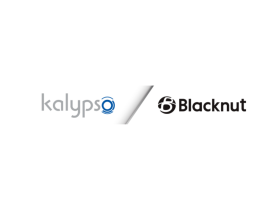Introduction: Liquidity, Intelligence, and Institutional Signals – A Telling Day for Web3
The blockchain space is experiencing a noticeable shift. While much of the industry spent the past two years licking its wounds from a protracted bear market, a renewed wave of activity is sweeping through the sector—led not by hype-fueled speculation, but by deep institutional participation, predictive analytics innovation, and protocol-level evolution.
On June 25, 2025, five major stories signal a decisive pivot in the market’s maturity arc:
-
Metaplanet’s aggressive $48M Bitcoin acquisition and $515M equity raise
-
Codex’s mainnet launch featuring native USDC support
-
A new frontier in predictive intelligence on blockchain
-
Goldman Sachs and Citadel Securities backing a $135M blockchain startup
-
A renewed focus on the meaning and utility of “on-chain” interactions
Today’s edition of Blocks & Headlines explores these stories through an op-ed lens, spotlighting how these developments reflect broader trends in the evolving landscape of crypto, DeFi, and decentralized infrastructure.
Metaplanet Accelerates Bitcoin Treasury Strategy with $48M Buy-In and $515M Raise
Source: CoinDesk
Japanese investment company Metaplanet has thrown down a serious marker in the digital asset space, adding $48 million worth of Bitcoin to its treasury. This move follows its announcement of a $515 million capital raise, which was largely driven by interest from institutional players keen to capitalize on the digital gold thesis.
Already labeled as “Japan’s MicroStrategy,” Metaplanet’s strategy is to hold Bitcoin as a primary treasury reserve asset, with expectations that BTC will outperform fiat in the face of rising inflation and stagnant interest rates.
Why It Matters:
This signals a critical shift in how non-Western corporations approach crypto. While U.S.-based companies have long taken tentative steps into the Bitcoin market, Metaplanet is doubling down, betting on macroeconomic instability and regulatory friction pushing more capital into decentralized stores of value.
Notably, Metaplanet’s expansion is being closely watched by APAC tech conglomerates, many of whom are grappling with devaluation and weakening yen dynamics.
Editorial Insight:
Metaplanet isn’t just making a treasury play—it’s rewriting the corporate finance playbook. In a world where traditional yield is disappearing, and central banks are on edge, Bitcoin represents more than speculation—it’s strategy.
The move also underscores Bitcoin’s continued relevance as a macro hedge, even amid the rise of more utility-based crypto networks. If this trend gains steam, we may see treasury diversification become a new institutional standard, much like ESG became non-negotiable in public equity investing.
Codex Launches Mainnet with USDC Support: A Stable Foundation for a New Blockchain
Source: The Defiant
The stablecoin-focused Layer 1 blockchain Codex officially launched its mainnet this week, with built-in support for Circle’s USDC. Codex aims to provide a highly secure and scalable infrastructure tailored for stablecoin operations and DeFi applications that require low-latency and fiat-native settlement layers.
Built on a custom proof-of-authority consensus engine, Codex claims to offer 2-second finality, gas fee stabilization mechanisms, and an embedded compliance API for developers.
Why It Matters:
Stablecoins are the on-ramps, off-ramps, and fuel of DeFi. While Ethereum and Solana continue to dominate transaction volumes, neither was purpose-built for the stablecoin economy. Codex positions itself as a chain optimized for payment flows, cross-border remittances, and CBDC integration.
The inclusion of USDC from day one adds legitimacy and liquidity to the launch, ensuring developers and fintech partners can deploy with instant composability.
Editorial Insight:
Codex might be flying under the radar, but its launch strategy is shrewd. By focusing on stablecoin rails rather than smart contract maximalism, it answers the unsexy but critical need for infrastructure reliability. In 2025, utility trumps novelty.
This also aligns with a broader trend: The quiet institutionalization of Web3 rails. The future of DeFi might not be anarchic—it might be ISO-compliant and KYC-integrated.
Predictive Intelligence Comes to Blockchain: A New Layer of On-Chain Insight
Source: Cointelegraph
Blockchain developers and data scientists are now racing to embed predictive intelligence into Web3 ecosystems. Leveraging advanced AI models and real-time data analytics, new platforms are emerging that offer on-chain forecasting—enabling traders, DAO treasuries, and even protocol designers to anticipate user behaviors, price trends, and systemic risks.
Several startups in this space are building cross-chain oracle networks, LLM-powered dashboards, and plug-and-play predictive APIs for dApps.
Why It Matters:
Predictive intelligence may soon become as critical to blockchain as consensus algorithms. Imagine a decentralized exchange that rebalances liquidity before a volatility spike, or a DAO that adjusts emissions schedules based on demand forecasts.
These developments mark a significant leap forward in proactive decentralization—where decisions are not just executed without intermediaries, but are intelligently informed without central authorities.
Editorial Insight:
If the last bull run was about financialization, the next one could be driven by contextual intelligence. The fusion of predictive AI and blockchain opens a portal to adaptive DeFi—smart contracts that don’t just automate logic, but respond to evolving environments.
This trend also opens new challenges around data integrity, oracle reliability, and adversarial manipulation, making cybersecurity and model validation paramount.
Goldman Sachs and Citadel Securities Back $135M Blockchain Startup
Source: Financial News London
Two of Wall Street’s heaviest hitters—Goldman Sachs and Citadel Securities—have joined a $135 million Series B funding round for an unnamed blockchain infrastructure startup that reportedly focuses on tokenized financial instruments and high-speed transaction settlement.
The investment underscores a deepening interest from traditional finance (TradFi) in blockchain rails for capital markets, particularly in areas like synthetic securities, programmable assets, and real-time clearing.
Why It Matters:
This is not about crypto exposure—it’s about market infrastructure evolution. Firms like Goldman and Citadel don’t chase buzzwords; they invest where latency, liquidity, and compliance converge. This signals a new era where DeFi and TradFi begin to blur, building a hybrid infrastructure that merges blockchain transparency with institutional efficiency.
Editorial Insight:
The days of dismissing DeFi as a fringe movement are over. When the most powerful trading firms in the world start deploying capital into decentralized rails, it’s a clear signal: Web3 is entering Wall Street’s bloodstream.
However, expect this wave to carry with it a heavy dose of regulatory alignment, transactional transparency, and auditability, likely reshaping the ethos of many existing DeFi projects.
What Does “On-Chain” Really Mean in 2025? A Concept Revisited
Source: Talk Business UK
As blockchain matures, the term “on-chain” is undergoing a quiet revolution. Once synonymous with immutable smart contracts and public transaction ledgers, today’s on-chain economy encompasses identity, behavior, credentials, and governance.
From soulbound tokens to cross-chain reputation systems, being “on-chain” no longer simply means broadcasting a transaction—it means embedding your presence, authority, and identity into a programmable, verifiable substrate.
Why It Matters:
With the rise of modular chains, zk-rollups, and cross-chain liquidity routers, the definition of “on-chain” is becoming increasingly abstract. As newer users enter the space through consumer-friendly interfaces, understanding the value of visibility, permanence, and transparency in decentralized systems is critical.
Editorial Insight:
The question “what does on-chain mean?” is existential. It goes to the core of blockchain’s value proposition: verifiable truth. In an age of deepfakes and AI slop, on-chain verification may become our last bastion of certainty.
Expect this discussion to influence everything from UX design to Layer 2 adoption, and even how regulatory regimes view “digital presence” in the years ahead.
Conclusion: From Infrastructure to Intelligence—The New Web3 Thesis
Today’s developments in the blockchain world reveal a multi-layered transformation: from static infrastructure to adaptive intelligence, from speculative tokens to programmable capital markets, and from vague decentralization to precision-led, institutional-grade systems.
-
Metaplanet’s bold Bitcoin strategy repositions crypto as macro hedge rather than high-risk asset
-
Codex’s mainnet signals a utility-first approach to Layer 1 innovation
-
Predictive intelligence introduces a proactive frontier for smart contract ecosystems
-
Goldman and Citadel’s involvement confirms that the future of finance will run on decentralized rails
-
And the meaning of “on-chain” itself is evolving—into something richer, deeper, and more culturally significant
As we move into the second half of 2025, blockchain is no longer chasing narratives. It’s building lasting, interoperable systems—where intelligence, capital, and identity converge in programmable environments. The players who understand this shift will define the next era of digital transformation.















Got a Questions?
Find us on Socials or Contact us and we’ll get back to you as soon as possible.